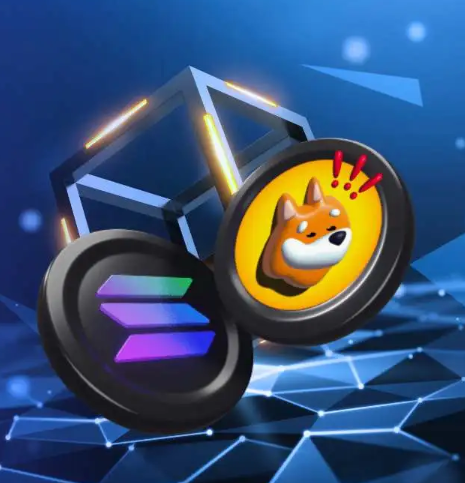In the ever-shifting terrain of blockchain technology, forks are pivotal events that shape the path of cryptocurrency networks. Whether introduced to enhance performance, resolve disputes, or implement new ideas, forks serve as milestones in the life of any decentralized platform. While the term “fork” might seem straightforward, it’s essential to distinguish between its two primary forms: soft forks and hard forks. Each has distinct characteristics, consequences, and strategic value.
What Exactly Is a Fork?
At its core, a fork represents a change in a blockchain’s protocol. When a fork occurs, it signals that the network’s rules are being modified, causing either a unified or divided path forward. These changes are typically approved through consensus among network participants, and they can lead to anything from minor tweaks to major transformations.
Let’s explore the specifics of both soft forks and hard forks to better understand how they differ and what each brings to the table.
Soft Forks: Tweaks Without the Tear
A soft fork introduces updates that remain compatible with the previous version of the software. In other words, nodes that haven’t upgraded can still interact with the network, although they might not understand the new rules entirely. The result is a single, uninterrupted chain where all participants—upgraded or not—can coexist.
How It Functions
Soft forks typically involve tightening existing rules rather than introducing new ones. For instance, they might reduce the block size limit or introduce optional features that older software can ignore without breaking functionality.
A Real-World Example
In 2017, Bitcoin rolled out the Segregated Witness (SegWit) upgrade. This change improved transaction processing efficiency while maintaining compatibility with older nodes, making it a textbook case of a soft fork in action.
Pros of Soft Forks
- Maintains a single chain without disruption
- Compatible with previous versions
- Encourages a smoother transition across the network
Cons of Soft Forks
- Cannot support drastic changes
- Requires majority support to be effective
Hard Forks: Bold Breaks From the Past
Hard forks differ significantly—they’re not backward-compatible. Once implemented, they create a new chain that follows updated rules, while the old version continues independently. For a hard fork to succeed, participants must choose to adopt the new software, otherwise, they remain on the original path.
How They Work
These forks allow for deep changes, like revising consensus models, modifying transaction structures, or reversing previous transactions. Due to their disruptive nature, they often lead to the creation of an entirely separate blockchain.
High-Profile Examples
- Bitcoin Cash: Born in 2017 from disagreements over Bitcoin’s scalability, Bitcoin Cash increased the block size limit, diverging from the original chain.
- Ethereum vs. Ethereum Classic: After the DAO breach in 2016, Ethereum rolled back the exploit through a hard fork. Those opposed to the reversal continued on what is now Ethereum Classic.
Pros of Hard Forks
- Enables substantial innovation and system-wide upgrades
- Offers a clear path for those wanting change
- Allows communities to choose their preferred vision
Cons of Hard Forks
- Splits the chain, creating potential for confusion and competition
- Can fracture communities
- May open doors to vulnerabilities like replay attacks
Comparing the Two: Side-by-Side Breakdown
| Aspect | Soft Fork | Hard Fork |
|---|---|---|
| Compatibility | Works with older software | Requires full update |
| Chain Structure | Maintains a single chain | Creates two separate chains |
| Nature of Changes | Incremental or limited | Extensive and structural |
| Community Effect | Lower potential for conflict | Higher risk of division |
| Upgrade Requirement | Optional | Mandatory for continued use |
Ripple Effects of Forks in the Blockchain World
Developers
- Soft forks let developers enhance features without disrupting existing systems.
- Hard forks allow bold revisions but demand greater coordination to handle potential splits.
Everyday Users
- Soft forks typically don’t require user intervention.
- Hard forks often necessitate wallet updates or decisions about which version of the chain to support.
Miners
- Soft forks allow continued mining with current setups.
- Hard forks force miners to choose between chains, impacting distribution of computing power.
Investors
- Soft forks tend to signal controlled improvements, boosting confidence.
- Hard forks can lead to the creation of new tokens—exciting for speculators, but risky for those seeking stability.
Getting Ready for a Fork
Whether you’re a coder, trader, or enthusiast, being prepared for a fork is vital:
- Stay updated on news from credible community sources
- Secure your assets by backing up wallets
- Evaluate the fork’s goals to decide where you stand
- Keep your software current to remain compatible and secure
Wrapping It Up
Blockchain forks—both soft and hard—are essential to the continuous evolution of decentralized technology. While soft forks focus on refining and enhancing systems without major disruption, hard forks enable sweeping changes and can set the stage for entirely new projects.
Understanding how these mechanisms function empowers all stakeholders to engage more meaningfully with the crypto ecosystem. As this space grows, the ability to navigate forks with clarity will be a valuable skill, whether you’re building applications, securing your holdings, or shaping the future of finance.












